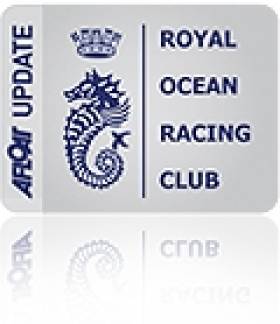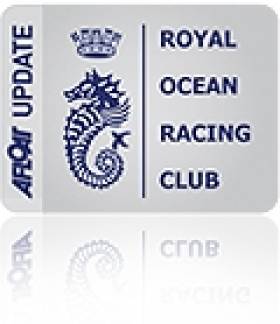Displaying items by tag: IRC
Dave Dwyer is 'Sailor of the Month' for June
Dave Dwyer of Cork is the Afloat.ie/Irish Independent “Sailor of the Month” for June with his convincing retention of the British Open IRC Championship over three days of racing which concluded in the Solent on Sunday June 27th.
A busy month of sailing had already produced several worthy contenders for the Sailor title. But Dwyer’s performance on the final weekend with the 39ft Marinerscove.ie (designed in 2006 by current Sailor of the Year Mark Mills of Wicklow) was in a league of its own.
The boat has of course been regularly updated and optimized during four busy years at the sharp end of national and international fleets. But even in these recessionary times, there are completely new and decidedly hot contenders coming on the scene,
Thus even as the Dwyer team – and it’s a formidable equipage - was shaping up for the Solent championship, right on Mills’ own doorstep in Wicklow it was being confirmed that the overall winner of the Round Ireland Race 2010 was the 46ft Tonnere de Breskens, designed by Jason Ker in 2008.
To add to the pain, second place went to another 2008 Ker boat, the 39ft Inis Mor (Bernard Gouy, Clifden Boat Club). In fact, there wasn’t a Mills design in the entire round Ireland fleet. But within four days, marinerscove.ie had done the business and redressed the balance against an international lineup off Cowes, clinching it with four wins on the final day of racing, and catapulting Dave Dwyer into Irish sailing’s kingpin spot for June.
More from W M Nixon on Dwyer's performance in today's Irish Independent here.
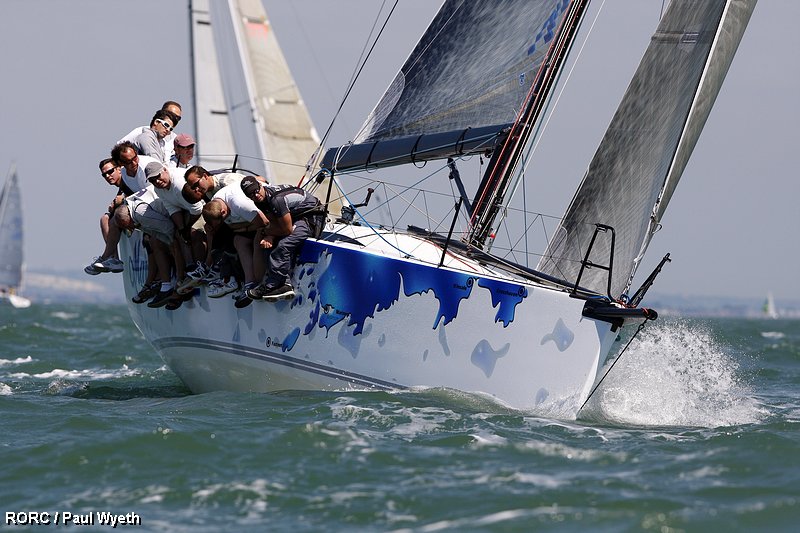
Dave Dwyer's Marinerscove in winning form on the Solent. Photo: Paul Wyeth
IRC Nationals Photography here!
Sailing snapper Paul Wyeth's photos of Britain's IRC Championships are showing the Solent off to the very best this weekend. A combination of great breeze, great sunshine and a keen photographer's eye is producing great results. The Irish boats competing Marinerscove, Antix and Roxy must think they're back home in Cork Harbour!



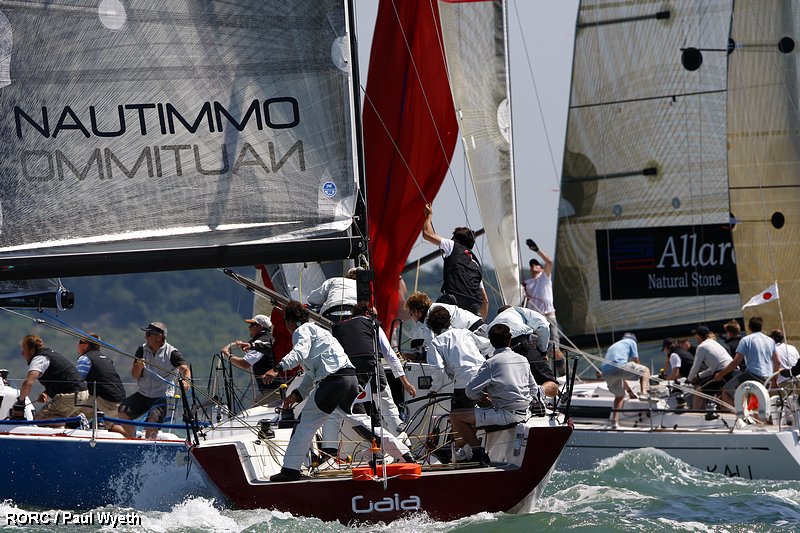
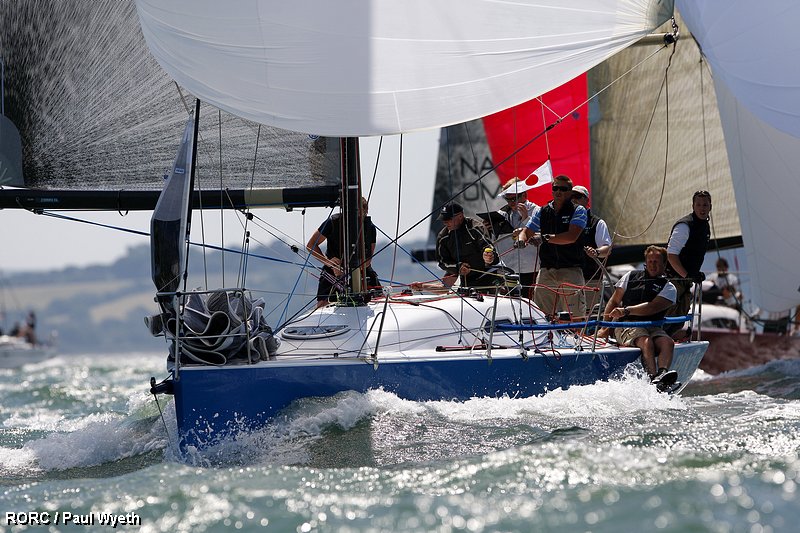
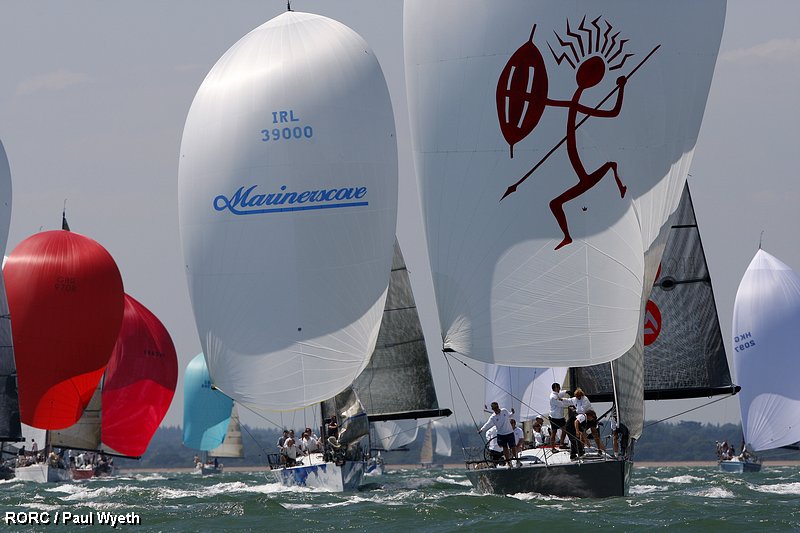
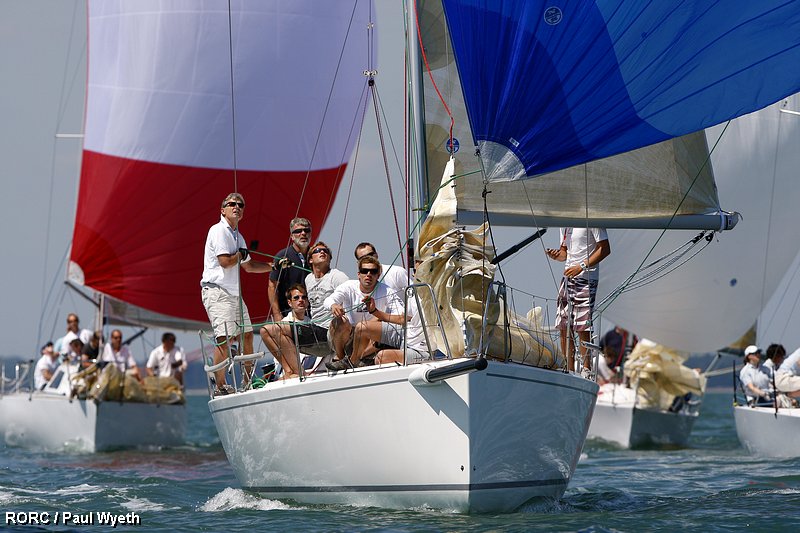


One of the most competitive fleets ever assembled enjoyed some spectacular sailing conditions (as Paul Wyeth's photos over the fold show) on the first day of the 2010 RORC IRC National Championship writes Louay Habib.
Charles Dunstone’s TP52, Team Origin Rio, had a perfect start to the championship, scoring three straight bullets in IRC Super Zero. “Rio just lights up in these conditions; it was absolutely fabulous out there today,” commented Charles Dunstone after racing.
There was an intense battle on the water in IRC Zero. Hong Kong’s Rolex Commodores’ Cup big boat, Mills 40, EFG Bank Mandrake, is in pole position after three races. Joint owner, Nick Burns had this to say dockside: “That was pretty hot racing out there. Great fun and fantastic stuff. We were delighted to take two wins but our disappointing last race has left us a bit perplexed. We seemed to lose boat speed upwind and downwind. Perhaps we picked up something on the keel but we really don’t know what the issue was.”

In IRC One reigning RORC IRC National Champion Dave Dwyer’s Mills 39, Marinerscove.ie, got off to a great start winning the first two races, but the last race of the day did not go according to plan. Tactician Andy Beadsworth explains: “The first two races went well for us, we sailed our own race and as the fastest boat in the class we could go our own way but it all went wrong in Race Three. We were too eager at the start and with close to three knots of tide we were over the line and had to go back. After that we misjudged a port-starboard and ended up doing penalty turns. However the recovery was good and we managed to claw our way back through the traffic for a third place.”
Marinerscove.ie leads IRC One after the first day. Peter Rutter’s Grand Soleil 43, Quokka 8, is in second place with Robert Davies’ Corby 36, Roxy 6, in third.
In IRC Two, Marc Alperovitch and Jerome Huillard’s A 35, Prime Time, had a disappointing first race but it was all smiles for the French team after that with two bullets to end the day top of the class leader board. Chris and Hannah Neve’s First 35, No Chance, is lying second over night with Steve Northmore’s A35, Waterjet.co.uk, in third place.
IRC Three may be the smallest class at the championship but virtually the entire class enjoyed a very close squabble in the western Solent. Mike and Jamie Holmes’ J 97, Jika Jika, came out on top after three races. James Morland’s Quarter Tonner, Menace, slipped up in the last race of the day but holds onto second place. Louise Morton’s Quarter Tonner, Anchor Challenge, has a very consistent day and is lying third.
Three races are scheduled for the second day of the Championship today. All of the competitors will be hoping for another fantastic day’s racing in the Solent.
Full results from Day One of the RORC IRC National Championship can be found at www.rorc.org

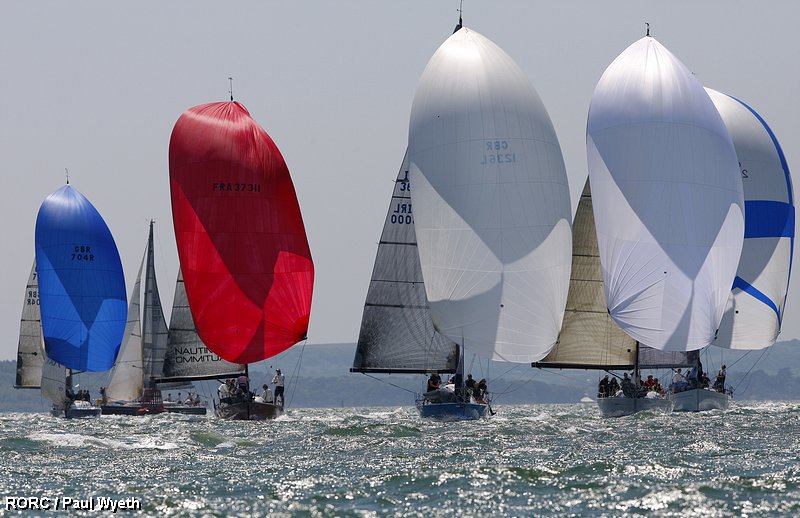




'Crazy Horse' Wins IRC Race in Howth
Crazy Horse was the winner of tonight's IRC racing at Howth Yacht Club. Second in class one was Equinox (r.Mcdonald) and third Tiger (Hughes/Harris). Full results here: WEDNESDAY SERIES 2 (RACE) 23/06/2010 Class 1 IRC: 1, Crazy Horse Reilly/Chambers; 2, Equinox R McDonald; 3, Tiger Hughes/Harris; Class 1 HPH: 1, Crazy Horse Reilly/Chambers; 2, Equinox R McDonald; 3, Joslim J Connolly; Class 2 IRC: 1, Harmony D & H Toomey; 2, MiniMumm Cobbe/McDonald; 3, Dux A Gore-Grimes; Class 2 HPH: 1, C'est la Vie Flannelly/Others; 2, Harmony D & H Toomey; 3, Jokers Wild G Knaggs; Class 3 IRC: 1, Starlet Bourke/Others; 2, Gecko K Darmody; 3, Helly Hunter L McMurtry; Class 3 HPH: 1, Hippocampus B O'Loughlin; 2, Starlet Bourke/Others; 3, Gecko K Darmody; White Sails HPH: 1, On the Rox C & J Boyle; 2, Empress III FitzPatrick/Glennon; 3, Fanatix R Fanning; White Sails IRC: 1, Alphida H Byrne; 2, Bite the Bullet C Bermingham; 3, On the Rox C & J Boyle
Rating Cost of Composite Rigging to be Reduced in 2011
The rating cost of composite standing rigging will be reduced with effect from 1st January 2011 following a recent meeting of the IRC Technical Committee.
The Committee noted that the technology of composite standing rigging has matured significantly in recent years to the extent that it is now becoming close to mainstream.
There is now evidence that composite standing rigging has a life expectancy at least that of steel rod rigging.
In parallel, the cost of composite standing rigging has fallen to the extent that some brands are now available at costs only a little higher than the equivalent steel rod rigging.
Composite standing rigging is also now beginning to become available as a standard option from production boat builders.
Noting all of the above, the Committee has concluded that the rating cost of composite standing rigging will be reduced with effect from 1st January 2011 (1st June 2011 in IRC southern hemisphere countries). This notice has been issued now to enable owners considering either new boats or modifications to their existing boats to plan accordingly.
The exact effects on TCC are not yet available. The Committee’s intention however is that the effects should in future be broadly neutral in terms of speed versus rating. The effect of composite standing rigging will also continue to vary from boat to boat



























